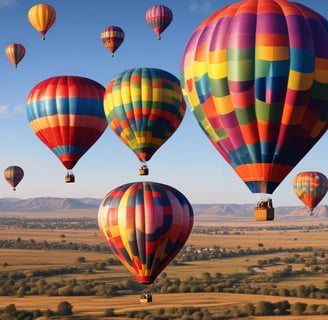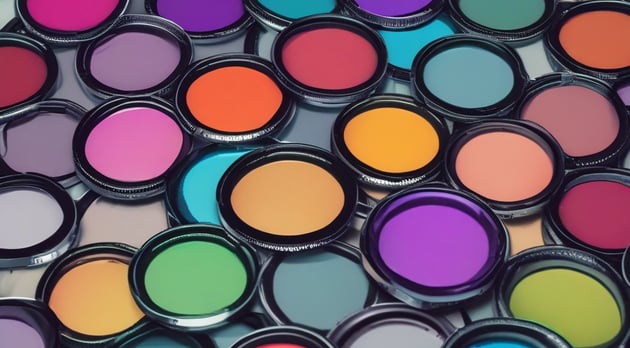Creative Photography Hacks for Newbies: Unlocking Your Artistic Potential
Explore creative photography hacks that every newbie can use to enhance their skills! Discover tips on using natural light, experimenting with angles, and incorporating simple props to take your photos to the next level. With easy editing techniques and a ready camera, you'll capture stunning images and find your unique style in no time!
CREATIVE PHOTOGRAPHY
thru this lenz
3/1/2025


As an Amazon Associate, I earn from qualifying purchases.
Exploring Creative Editing Techniques
When it comes to elevating your photography skills, exploring creative editing techniques is an essential step for beginners. Software programs such as Adobe Lightroom and Photoshop offer a vast array of tools that can transform your images, allowing you to express your artistic vision fully. Understanding the fundamentals of color grading is a vital technique that can significantly enhance your photos. By adjusting the hues, tones, and saturation, you can set the mood and evoke the desired emotions in your viewers. This not only improves the aesthetic quality of your images but helps in communicating the story behind each photograph.
Another valuable approach is adding textures to your images. This technique can provide depth and interest that might be lacking in the original photo. Textures can be sourced from various platforms or even created by you, and once applied, they can drastically change the feel of an image. Furthermore, experimenting with contrast and saturation adjustments is a practical way to accentuate certain elements within your photographs, drawing viewers' eyes to areas of importance while also allowing for a more dynamic and engaging experience.
For those who prefer editing on the go, mobile editing apps have gained popularity among beginners due to their user-friendliness and convenience. Apps like Snapseed and VSCO offer beginner-friendly interfaces that allow novices to experiment with various filters and editing tools without the steep learning curve associated with desktop software. By utilizing presets and filters wisely, beginners can enhance their photos effortlessly. However, it is crucial to strike a balance; overusing these effects may detract from the photo's original charm. Subtle enhancements can make a significant difference, providing a polished look without overwhelming the image's natural beauty.
Innovative Camera Settings for Unique Shots
To elevate your photography and unlock your artistic potential, understanding and utilizing innovative camera settings is essential. By venturing beyond automatic modes and embracing manual settings, photographers can gain greater control over their creative vision. Shooting in manual mode allows you to independently adjust exposure, aperture, and ISO, leading to unique results that reflect your personal style. This flexibility can be particularly beneficial in dynamic environments where lighting conditions frequently change.
One of the less common but transformative settings to explore is white balance adjustment. While many photographers leave this setting on auto, manually fine-tuning your white balance can produce artistic effects that enhance the mood of your images. By selecting a cooler or warmer temperature, you can evoke different emotions or replicate the conditions of the natural light present when capturing the shot. This method fosters creativity and can result in photos that convey a deeper narrative.
Additionally, experimenting with different frame rates can greatly affect how motion is captured. Whether you're photographing a serene landscape or the bustling activity of city life, adjusting the frame rate can lead to distinctive, expressive results. Slow shutter speeds are particularly effective for creating beautiful motion blurs, allowing subjects to appear ethereal and dynamic. This technique can also produce striking ghosting effects when shooting moving subjects, transforming ordinary scenes into captivating visuals.
Finally, capturing long exposure shots during low light conditions is a remarkable way to create stunning images. By utilizing a tripod and a slow shutter speed, you enable the camera to gather light over an extended period, resulting in vibrant photographs filled with luminosity and movement. This technique can illuminate otherwise dark landscapes and provide a unique perspective on your subject matter. Through these innovative camera settings, photographers can enhance their creative expression and produce compelling, unique shots.
Mastering the Art of Light Manipulation
Light is one of the most crucial elements in photography that can dramatically influence the mood, depth, and overall aesthetics of an image. For newcomers venturing into the realm of photography, understanding how to manipulate light can unlock a plethora of creative possibilities. Through various techniques such as backlighting, utilizing shadows, and experimenting with natural light at different times of the day, photographers can cultivate unique and visually stunning compositions.
Backlighting, for instance, occurs when the light source is positioned behind the subject. This technique can produce a glowing effect around the subject, enhancing its outlines and imparting a dreamy quality to the photograph. It’s particularly effective during the golden hour, the period shortly after sunrise or before sunset, where the light is soft and warm. Additionally, using shadows can add depth and intrigue to an image, forcing the viewer’s eye to engage with the different elements within the frame.
In addition to natural light, employing tools such as reflectors and diffusers is instrumental in shaping the desired atmosphere of a photograph. Reflectors can redirect light onto the subject, creating bright highlights, while diffusers softly scatter intense light, producing an even and flattering illumination. These tools are invaluable for balancing shadows and highlights, making them essential for portraits and product photography.
Lastly, introducing colored lights and gels can add a layer of creativity to your photography. By casting colored lights on subjects or backgrounds, photographers can evoke particular emotions, set a thematic tone, and transform mundane scenes into extraordinary visual narratives. Experimenting with colors, in tandem with the manipulation of light, opens up endless avenues for artistic expression.
Harnessing Filters for Enhanced Effects
Filters play a vital role in photography, allowing artfully inclined individuals to manipulate light and color in captivating ways. For beginners, engaging with both physical and digital filters can enhance creativity and expression, leading to stunning visual storytelling. Physical filters, such as polarizing and neutral density (ND) filters, offer specific benefits that can dramatically transform images. A polarizing filter, for instance, is particularly effective in reducing glare and reflections, making it an excellent choice for capturing landscapes with water bodies or shiny surfaces. This filter also intensifies colors, enriching the overall composition without compromising on quality.
Neutral density filters, on the other hand, limit the amount of light entering the lens, which proves beneficial when shooting in bright conditions. This allows photographers to use wider apertures or longer exposures, resulting in beautifully blurred backgrounds or motion effects, such as silky-smooth waterfalls. Experimenting with different ND filter strengths can open countless creative avenues, providing photographers with the tools needed to bring their artistic visions to life.
Digital filters, available through editing software, further enhance the creative possibilities. These filters allow users to modify images post-capture, applying effects that can range from subtle adjustments in brightness and contrast to striking color enhancements. Utilizing a variety of digital filters can quickly turn an ordinary photograph into an extraordinary piece of art. However, it's essential to apply these effects judiciously. Overusing filters can lead to unnatural results, detracting from the image's clarity and authenticity.
Incorporating filters into photography is a straightforward process for beginners. By experimenting with varying filter settings, photographers can discover how each change impacts their images. This exploration fosters a deeper understanding of light and color, empowering newcomers to develop their unique style while maintaining a delicate balance between creativity and clarity.


Affiliate Disclosure
As an Amazon Associate, I earn from qualifying purchases. This means that if you click on a link to buy a product and make a purchase, I may receive a small commission at no extra cost to you. My goal is to provide you with helpful reviews and recommendations based on my personal experience, and I only promote products that I believe will add value to you. Thank you!
© 2024. All rights reserved.
